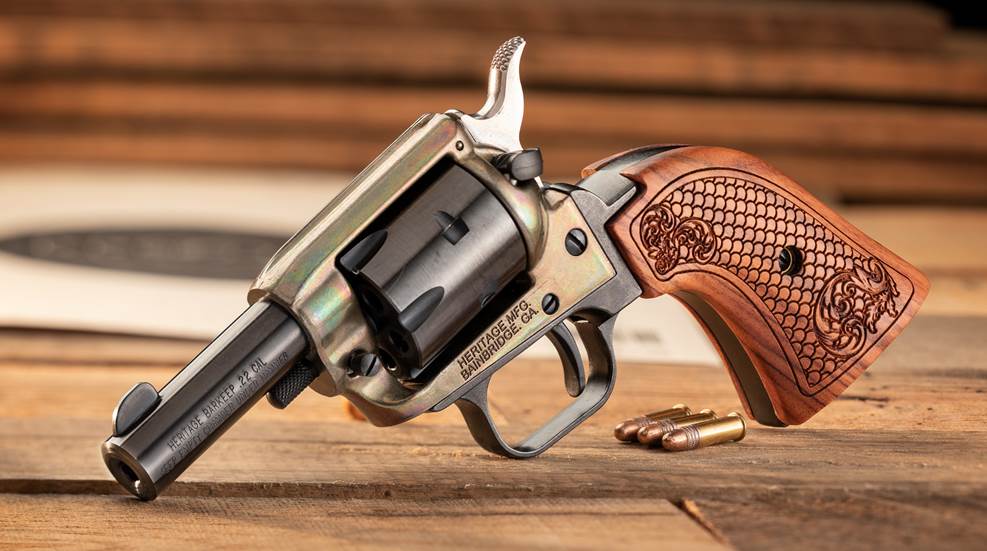
Shot placement. Just like most other rounds.
“What’s the best caliber for a self-defense handgun?”
The one you have with you.
L
An eye shot is an eye shot.
Hollow points. Aim for the face. A .410 works, too.
for many years I carried concealed. I chose a .22lr in a PPK clone or a small frame 9mm. I shot thousands of rounds through these so I counted on accuracy. I also own M1911 and 357 but those are open carry only so they are limited for wandering through the streets of Seattle.
S&W Shield…. 380. I’ve twice hit a snake in the head while in the creek with it. Crazy small and easy to conceal. Don’t leave home without it…..
Although caliber is not mentioned, this story makes the point that one needs the right weapon for the situation.
I would guess that a .22 would have been about as effective as a fly swatter.
I keep an old Ruger Mark I 22LR (8 inch barrel) in my nightstand. Most easily accurate pistol I’ve ever fired.
As an aside, about 40 years ago a neighbor asked out of the blue if I “collected Ruger handguns”. I said no. He told me later that question was code among KKK people to identify each other.
Most real-world gunfights happen within 7 feet.
A large diameter bullet has superior stopping power close in.
Many handguns shoot larger diameter bullets that slow down considerably at 100 yards.
The typical .357 magnum bullet is still traveling at more than 1,000 feet per second at 100 yards.
A .451 or .452 inch diameter bullet fired in pistols chambered in .45 ACP and .45 Colt (for example) can slow down to about 600 feet per second at 100 yards. A lot of the speed depends on the powder load in the cartridge.
You don’t want your bullet to cross the street and pass through several walls of a house and hit someone inside who is not the immediate threat to you.
Whatever you carry is the best defense. A weapon is only as good as the shooter is proficient with it.
The FIRST purpose of a handgun is to get you out of danger. Blast away, and if you can, run like heck.
That is your PRIMARY PURPOSE. It’s not to kill the other human being.
One only needs to go back to the Reagan assassination attempt to get an idea of what a 22 can do. Cheap RG 22 revolver, 6 shots fired leaving 4 wounded and 3 on the ground. I’ve shot a lot of trapped hogs with a 22 LR some well over 200 lbs, and killed many smaller while sitting over feed.
Now it’s not a caliber I want to get in a gunfight with but the last thing I want to do is get in a gunfight. You start poking holes in somebody and it’s a game changer and gives you time to get the hell out of there.
One of my handgun teachers said something memorable, which has stuck with me for a number of years.
“Bad guys don’t do what they do to get shot”. He used that as an argument, which he supported with data, that “one-shot stops” can happen with .22LR, since “one shot” that hits and that hurts can end a not-quite-yet gunfight by adjusting the bad guy’s reality frame.
Whereas, when you are the defender, fighting for your life, you need to keep fighting, bad guys always have the better option to relocate to a better target.
One of the firearms/self defense instructors I know carries a 22 and is very good with it. When challenged by the bigger is better crew his response is: “Let me put a round into your eye and then tell me how you feel about 22’s.”
Never denigrate a caliber which you are not willing to have fired at you.
.22 WMR is a rimfire with a thicker cartridge than .22 LR. It requires a harder pin/striker strike, and therefore a harder trigger pull.
For the longest time, .22lr was easier to find and relatively inexpensive. I bought a fully semiautomatic rifle chambered in .22 mainly because I found a huge box of ammo for dirt cheap (mis-marked in a pawn shop).
All I ask is that you buy American made ammo when available.

I remember the 1950s and 60s when most murders were committed with a .22. I believe ammo costs at that time had a lot to do with it.